Everything you need to know about growing hot peppers

Bitter peppers are not as popular among gardeners as sweet peppers. Nevertheless, its fruits are often used in the preservation process or in the preparation of various dishes. Growing such a pepper in your area is within the power of any gardener.
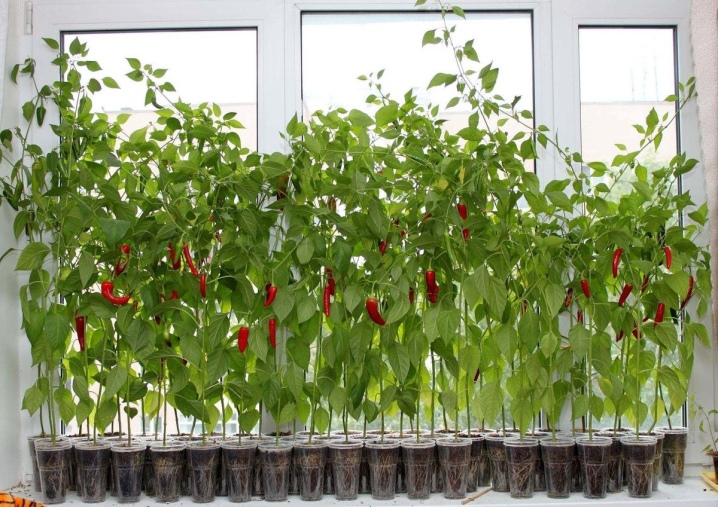
Variety selection
When choosing a variety of red hot pepper, you need to take into account its ripening time, degree of bitterness and resistance to various diseases or temperature extremes. If you choose the right plant, it will take root perfectly in the selected area. The following varieties of pepper are considered the most popular.
- Impala. This variety is great for growing in cold regions. Its fruits are elongated and taste good. Young plants do not need special care and are resistant to most common diseases. Therefore, even novice gardeners can grow them.

- "Astrakhansky". This plant is hybrid. Pepper grows well in hot regions. Its fruits are not too sharp. Therefore, they can be used to prepare many dishes.

- Bitter Cayenne. This variety is known for its sharp, pungent taste. The fruits of the pepper are bright scarlet. They grow up to 15 centimeters in length. The bushes are resistant to disease and frost.
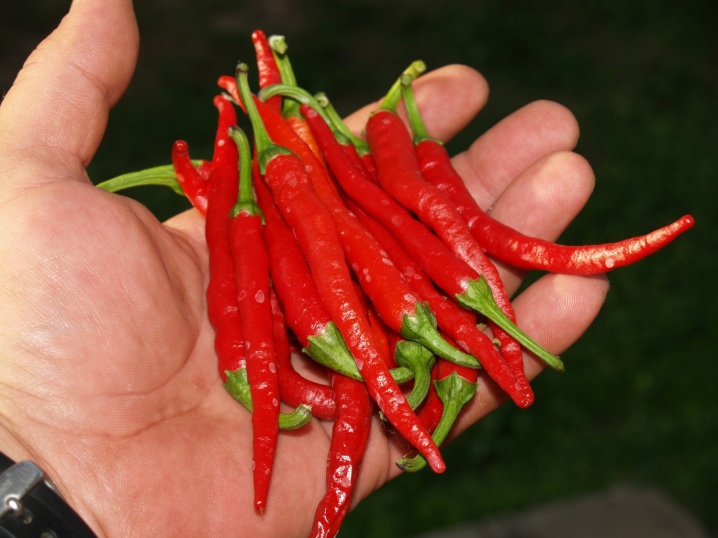
- "Vizier". Pepper differs from all others in the unusual shape of the fruit. Its pods are red in color. Their flesh is juicy and not too bitter. Very often, such peppers are used to decorate the festive table, because they look very beautiful.

- "Danube". This type of pepper is usually grown in regions with a temperate climate. Ripe fruits are large in size and have a red-green color. Pepper has a high yield. He is not afraid of extreme heat or sudden temperature changes.

All of these peppers are quite common, so there will be no problem buying them.
How to grow seedlings?
Bitter peppers have a long growing season. Therefore, it is recommended to plant sprouted seedlings on the beds. Agrotechnology for growing seedlings consists of several main stages.
Landing dates
It takes 100-120 days to grow hot peppers. Usually, gardeners begin to plant seeds at the end of February or in the first days of March. Some people, choosing favorable days for landing, are guided by the lunar calendar.
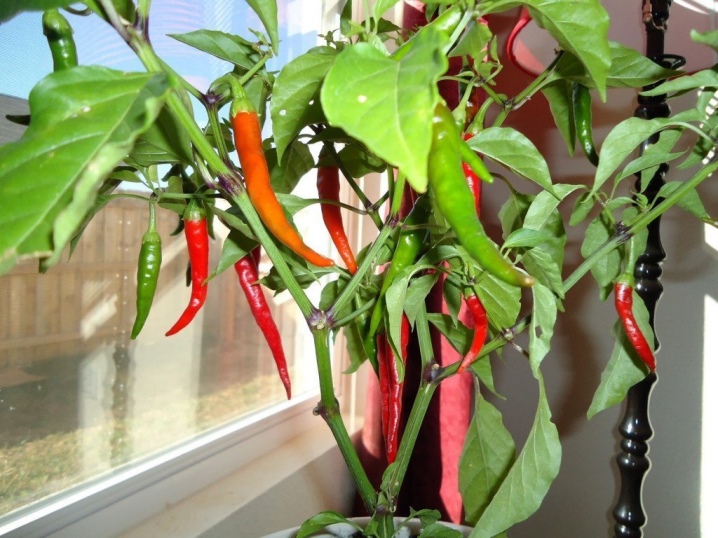
Preparation
First you need to prepare the pepper seeds. The first step is to check their quality by pouring the contents of the sachet into a glass of strong saline solution. All healthy seeds will settle to the bottom. Instances that float to the surface must be discarded. The remaining grains must be thoroughly rinsed under running water.
Next, you need to disinfect the seeds. To do this, they are treated with furacilin or potassium permanganate. After this treatment, the seeds are washed again. To speed up the growth of peppers, they can be placed in a solution with a stimulant for a day. Next, you need to harden the seeds. They are placed in the refrigerator for a couple of days, then warm for a day, and then back into the refrigerator.

The seeds prepared in this way only need to germinate. To do this, they need to be wrapped in several layers of wet gauze and placed next to a radiator or some kind of heating device. Green sprouts from the seeds will hatch in about a week.
Separately, you need to prepare containers. A drainage layer is poured at the bottom of each of them. For this purpose, you can use small brick chips or expanded clay. Above, you need to lay a layer of nutritious soil mixed with high-quality compost and sand.

To disinfect the ground, it must be poured with boiling water.
Sowing
In the prepared soil, you need to make several small holes. They should be spaced 3-4 cm apart. Germinated seeds are placed in such holes. After that, the pits are lightly sprinkled with earth, and then watered with warm water. It is recommended to cover containers with seeds with glass or plastic wrap.

After that, it is advisable to move them to a warm place. Typically, containers are installed on a windowsill or balcony.
Care
As soon as the first leaves appear on young peppers, they will need to be dived. In the future, the plants are grown in separate small containers. You can use small pots or cups for this. During the germination of seedlings, the soil in the glasses must be well moistened.
To strengthen the root system of young plants, gardeners feed them with nitrogen and phosphorus. Peppers grow much faster after proper feeding.

Landing in open ground
Peppers sprouted in separate containers can be planted in open ground immediately after 8-10 leaves appear on them.
Seat selection
The first step is to find the right site for planting the peppers. It should be well lit and protected from the winds. It is permissible to arrange the beds in partial shade.
It is not recommended to plant peppers in the same area for several years in a row. It is very important to follow the rules of crop rotation. The yield of plants depends on which predecessors grew in the garden before planting the pepper. It is best to plant it in an area where white cabbage previously grew. Legumes, onions, and garlic can be good precursors for peppers.

An important role is also played by what kind of neighbors the young bushes will have. Pepper is compatible with onions, eggplants, zucchini and tomatoes. You can also plant spinach next to the beds. Such a neighborhood will only benefit young plants.
Preparation
Before planting seedlings, it, like the seeds, must be hardened. To do this, a container with green sprouts is taken out into the yard or onto the balcony. At first, it is left there for only 10-20 minutes. Over time, the exposure time of plants to the open air increases. Seasoned seedlings can be planted in the garden without worrying that they will die due to sudden changes in temperature.

The soil in the selected area also needs to be prepared before planting the plants. It must be dug to the depth of the shovel bayonet. In the process of digging the beds into the soil, it is worth adding organic fertilizers. If green manures previously grew on the site, they are embedded in the ground.
Schemes
When planting young seedlings on a site, it is important to take into account the size of future bushes. Tall peppers are planted at a distance of 40-50 centimeters from each other. The distance between undersized bushes should be within 30 centimeters. Individual rows should be 50 centimeters apart. The beds are arranged at a distance of 100 cm.
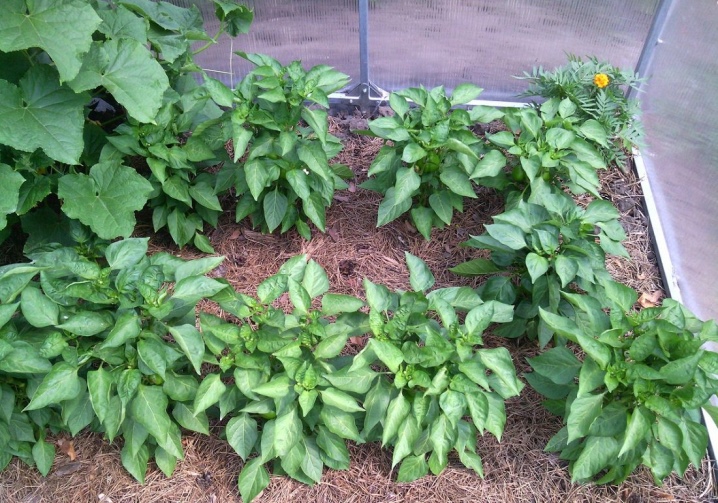
Technology
The process of planting grown seedlings on the site looks very simple. To begin with, each plant must be carefully removed from the pot along with an earthen lump. Trying not to damage the roots and stem of the young seedling, it must be placed in the hole. Next, the hole needs to be half filled with soil, and then watered with water. After that, you should wait until the moisture is absorbed into the ground. Next, the remnants of the earth are poured into the hole. After planting, it is recommended to tie the plants to supports.

In this case, young peppers will be protected from sudden gusts of wind. It is worth planting plants in the soil after sunset.
Watering and feeding
Young peppers need proper watering.Lack of moisture in the soil can greatly affect the yield of the plant. Therefore, young peppers need to be watered frequently. To do this, it is worth using settled warm water in small quantities. If the summer is too hot, the frequency of watering should be increased. Water is poured directly under the root.

Regular feeding also plays an important role in the development of pepper. For the first time, fertilizer is applied to the soil 10 days after planting. At this time, nitrogen compounds are used. After the appearance of the first buds, the plants are fed with potassium, during fruiting - with phosphorus-potassium fertilizers. Plants can be fed with a simple nettle tincture several times during the season. This will enhance the growth of green mass and fruits.
After watering and fertilizing, the bushes are recommended to mulch. This procedure allows you to retain moisture in the soil.

In addition, mulch protects plants well from weeds. It is laid so that dry grass does not come into contact with plant stems.
Formation
Grown peppers must be properly shaped. This reduces the stress on the stem. The process looks very simple. The first step is to remove all the foliage, stepsons and buds that are below the stem fork. The latter should consist of two strong branches. In the future, the lower leaves will also need to be regularly cut off.
At the end of July, it is recommended to pinch the bushes. This is done in order to stop the growth of flowers and make the plants stronger. Fruits that appear in the fork area must be removed. If this is not done, they will interfere with the normal development of the plant.

Excessively growing bushes must be pinned in a timely manner. This is done to ensure that the shoots do not get tangled, and the plants receive a sufficient amount of moisture and nutrients.
Diseases and pests
Hot peppers, like other plants in the garden and vegetable garden, are often attacked by pests and diseases. To protect the bushes, they must be treated 1-2 times per season with special preparations.
To protect plants from such common diseases as late blight, powdery mildew or tobacco mosaic, the bushes are usually treated with "Fitosporin". Such preparations as "Aktara" and "Fitoverm" help to save peppers from seasonal pests. They help protect the area from whiteflies, aphids, wireworms and spider mites.
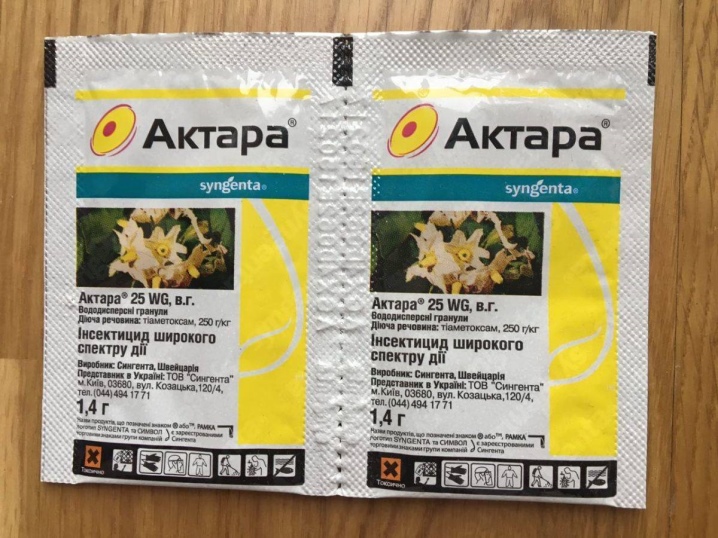
Instead of purchased drugs, many gardeners prefer to use folk remedies. Usually, the site is sprayed several times per season with herbal infusions or solutions with a pungent and unpleasant odor.
The nuances of growing, taking into account the conditions
It is possible to grow hot peppers at home not only in the open field, but also in a greenhouse or even on a wide windowsill or balcony. Each growing method has its own characteristics.
On the windowsill
Peppers growing in a house or apartment should be in large pots. They should be placed in a bright place. In this case, it is important to ensure that direct sunlight does not fall on the foliage.
For the winter, it is recommended to transfer the plant to a dormant state. At this time, the bushes stop feeding. All ovaries and flowers are removed. The frequency of watering is reduced.

In the spring, the pepper growing in the pot is examined. If he needs a transplant, it is best to do this procedure in March or April. You can harvest from peppers growing on a windowsill or balcony several times a year.
In the greenhouse
When growing plants in a greenhouse in the country, they are planted close enough to each other. This point is important to consider when forming bushes. They should not be as bulky and spreading.
In order for the peppers to develop normally in the greenhouse, it is important to maintain an optimal level of humidity in the room. It should be within 70%. If the humidity in the room is high, it is recommended to ventilate the greenhouse. If it is lowered, it is worth placing several containers with water there.The room temperature should be between 23-27 degrees.

Plants in the greenhouse have to be pollinated manually. This should be done during the flowering of the peppers. To do this, it is enough to shake off pollen from one flower to another with gentle movements.
Experienced gardeners claim that hot peppers grow faster in modern greenhouses than outdoors. In addition, growing peppers in such conditions can significantly increase the yield of plants.

Collection and storage
In cooking, you can use not only fully ripe, but also unripe fruits. But it is recommended to store the pepper only after it is fully ripe.
There are several signs that the hot peppers are fully ripe and can be harvested.
- The pods take on a vivid color. The shade of the fruit depends on which variety was chosen by the gardener.
- The foliage is starting to turn yellow. The lower part of the bush dries up at the same time.
- Having broken off a small piece from the fetus, a person immediately feels a burning sensation.
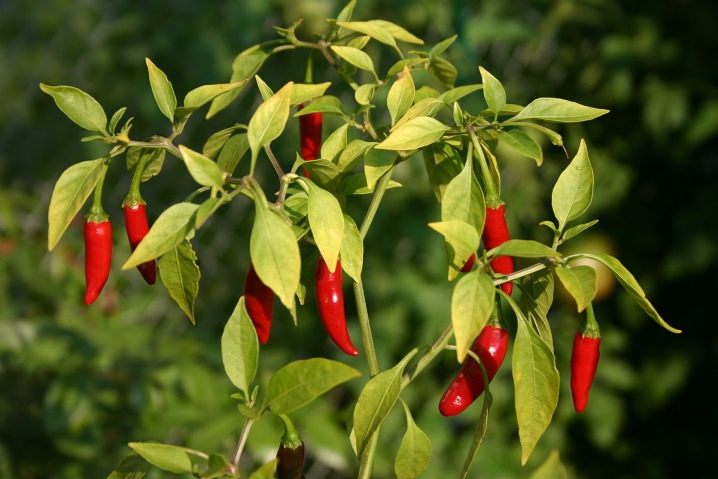
Chili peppers are usually harvested in the last days of September. Ripe fruits are simply plucked from the bushes, washed under cold water, and then wiped off with a towel and slightly dried. To do this, they are laid out on parchment and left in a dry and warm place for several days. Prepared fruits can be folded into a cloth bag or glass jar.
The container must be tightly tied or closed with a lid. If there are very few peppers, you can hang them by the stalk on a string. You need to store the fruits in a dry place.

Hot peppers can also be preserved in sunflower oil or marinade. If there is no time for preservation, it should simply be placed in the freezer. There it can be stored for several months in a row.
Chili peppers are great for most people. It activates the metabolic process, improves immunity and protects the human body from colds. It should be remembered that the fruits of red pepper should not be consumed by people who have problems with the kidneys, liver or gastrointestinal tract.
Young peppers will grow strong and healthy in all conditions if properly cared for.









The comment was sent successfully.